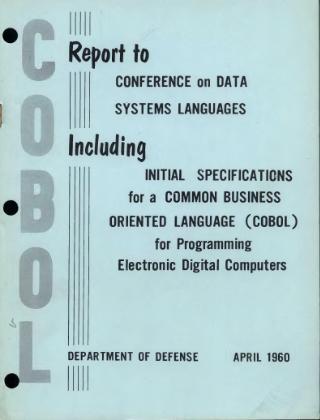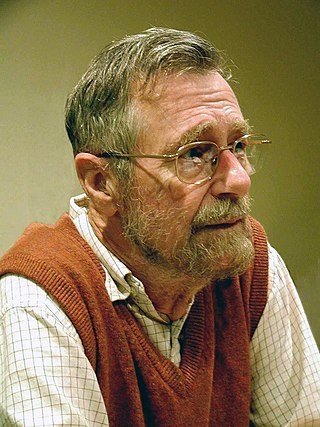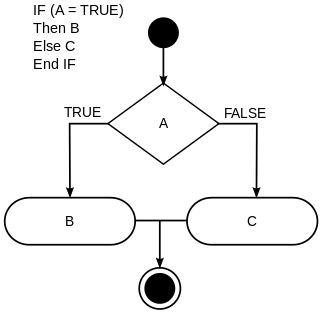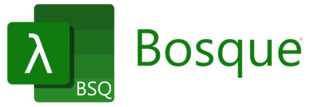Related Research Articles

A computer program is a sequence or set of instructions in a programming language for a computer to execute. It is one component of software, which also includes documentation and other intangible components.

COBOL is a compiled English-like computer programming language designed for business use. It is an imperative, procedural and, since 2002, object-oriented language. COBOL is primarily used in business, finance, and administrative systems for companies and governments. COBOL is still widely used in applications deployed on mainframe computers, such as large-scale batch and transaction processing jobs. Many large financial institutions were developing new systems in the language as late as 2006, but most programming in COBOL today is purely to maintain existing applications. Programs are being moved to new platforms, rewritten in modern languages or replaced with other software.

Edsger Wybe Dijkstra was a Dutch computer scientist, programmer, software engineer, and science essayist.

A programming language is a system of notation for writing computer programs.
Procedural programming is a programming paradigm, classified as imperative programming, that involves implementing the behavior of a computer program as procedures that call each other. The resulting program is a series of steps that forms a hierarchy of calls to its constituent procedures.
Structured programming is a programming paradigm aimed at improving the clarity, quality, and development time of a computer program by making extensive use of the structured control flow constructs of selection (if/then/else) and repetition, block structures, and subroutines.
In computer science, control flow is the order in which individual statements, instructions or function calls of an imperative program are executed or evaluated. The emphasis on explicit control flow distinguishes an imperative programming language from a declarative programming language.
A programming paradigm is a relatively high-level way to structure and conceptualize the implementation of a computer program. Each programming language can be classified as one or more paradigms.
Software design is the process by which an agent creates a specification of a software artifact intended to accomplish goals, using a set of primitive components and subject to constraints. The term is sometimes used broadly to refer to "all the activity involved in conceptualizing, framing, implementing, commissioning, and ultimately modifying" the software, or more specifically "the activity following requirements specification and before programming, as ... [in] a stylized software engineering process."
In computer programming, a block or code block or block of code is a lexical structure of source code which is grouped together. Blocks consist of one or more declarations and statements. A programming language that permits the creation of blocks, including blocks nested within other blocks, is called a block-structured programming language. Blocks are fundamental to structured programming, where control structures are formed from blocks.

In computer science, conditionals are programming language commands for handling decisions. Specifically, conditionals perform different computations or actions depending on whether a programmer-defined Boolean condition evaluates to true or false. In terms of control flow, the decision is always achieved by selectively altering the control flow based on some condition . Although dynamic dispatch is not usually classified as a conditional construct, it is another way to select between alternatives at runtime. Conditional statements are the checkpoints in the programe that determines behaviour according to situation.
In computer programming, COMEFROM is an obscure control flow structure used in some programming languages, originally as a joke. COMEFROM is the inverse of GOTO in that it can take the execution state from any arbitrary point in code to a COMEFROM statement.
The structured program theorem, also called the Böhm–Jacopini theorem, is a result in programming language theory. It states that a class of control-flow graphs can compute any computable function if it combines subprograms in only three specific ways. These are
- Executing one subprogram, and then another subprogram (sequence)
- Executing one of two subprograms according to the value of a boolean expression (selection)
- Repeatedly executing a subprogram as long as a boolean expression is true (iteration)
In computer programming languages, a switch statement is a type of selection control mechanism used to allow the value of a variable or expression to change the control flow of program execution via search and map.
Concurrent computing is a form of computing in which several computations are executed concurrently—during overlapping time periods—instead of sequentially—with one completing before the next starts.

Control tables are tables that control the control flow or play a major part in program control. There are no rigid rules about the structure or content of a control table—its qualifying attribute is its ability to direct control flow in some way through "execution" by a processor or interpreter. The design of such tables is sometimes referred to as table-driven design. In some cases, control tables can be specific implementations of finite-state-machine-based automata-based programming. If there are several hierarchical levels of control table they may behave in a manner equivalent to UML state machines

Goto is a statement found in many computer programming languages. It performs a one-way transfer of control to another line of code; in contrast a function call normally returns control. The jumped-to locations are usually identified using labels, though some languages use line numbers. At the machine code level, a goto is a form of branch or jump statement, in some cases combined with a stack adjustment. Many languages support the goto statement, and many do not.
This article attempts to set out the various similarities and differences between the various programming paradigms as a summary in both graphical and tabular format with links to the separate discussions concerning these similarities and differences in extant Wikipedia articles.
Data-centric programming language defines a category of programming languages where the primary function is the management and manipulation of data. A data-centric programming language includes built-in processing primitives for accessing data stored in sets, tables, lists, and other data structures and databases, and for specific manipulation and transformation of data required by a programming application. Data-centric programming languages are typically declarative and often dataflow-oriented, and define the processing result desired; the specific processing steps required to perform the processing are left to the language compiler. The SQL relational database language is an example of a declarative, data-centric language. Declarative, data-centric programming languages are ideal for data-intensive computing applications.

Bosque is a free and open-source programming language designed & developed by Microsoft that was inspired by the syntax and types of TypeScript and the semantics of ML and Node/JavaScript. Design goals for the language include better software quality and improved developer productivity.
References
- ↑ Dijkstra 1968, "The unbridled use of the go to statement has as an immediate consequence that it becomes terribly hard to find a meaningful set of coordinates in which to describe the process progress. ... The go to statement as it stands is just too primitive, it is too much an invitation to make a mess of one's program."